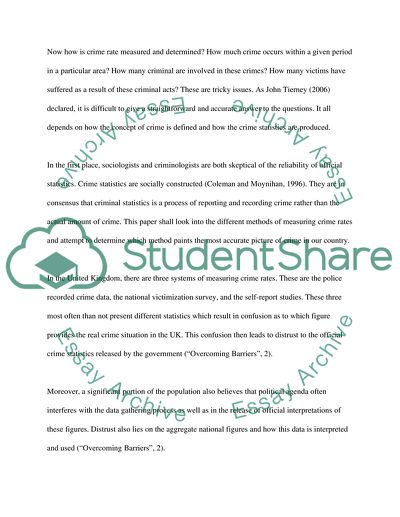Cite this document
(“Measuring Crime Rate in the UK Personal Statement”, n.d.)
Measuring Crime Rate in the UK Personal Statement. Retrieved from https://studentshare.org/law/1752071-police-recorded-crime-data-national-vicitmisation-surveys-or-self-report-studies-which-gives-us-the-most-accurate-measure-of-crime-discuss-with-specific-reference-to-the-methodological-strengths-and-weaknesses-of-each
Measuring Crime Rate in the UK Personal Statement. Retrieved from https://studentshare.org/law/1752071-police-recorded-crime-data-national-vicitmisation-surveys-or-self-report-studies-which-gives-us-the-most-accurate-measure-of-crime-discuss-with-specific-reference-to-the-methodological-strengths-and-weaknesses-of-each
(Measuring Crime Rate in the UK Personal Statement)
Measuring Crime Rate in the UK Personal Statement. https://studentshare.org/law/1752071-police-recorded-crime-data-national-vicitmisation-surveys-or-self-report-studies-which-gives-us-the-most-accurate-measure-of-crime-discuss-with-specific-reference-to-the-methodological-strengths-and-weaknesses-of-each.
Measuring Crime Rate in the UK Personal Statement. https://studentshare.org/law/1752071-police-recorded-crime-data-national-vicitmisation-surveys-or-self-report-studies-which-gives-us-the-most-accurate-measure-of-crime-discuss-with-specific-reference-to-the-methodological-strengths-and-weaknesses-of-each.
“Measuring Crime Rate in the UK Personal Statement”, n.d. https://studentshare.org/law/1752071-police-recorded-crime-data-national-vicitmisation-surveys-or-self-report-studies-which-gives-us-the-most-accurate-measure-of-crime-discuss-with-specific-reference-to-the-methodological-strengths-and-weaknesses-of-each.


